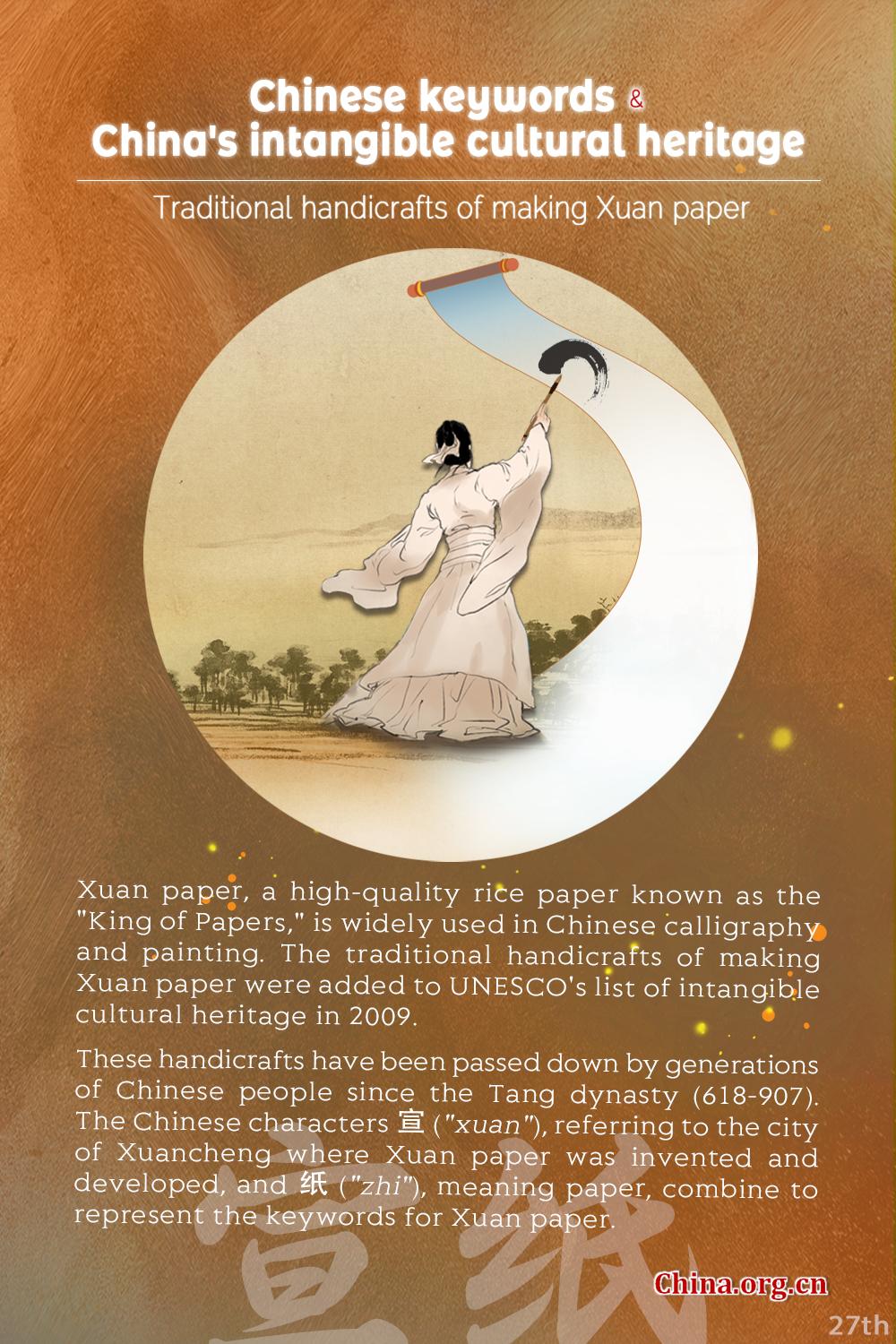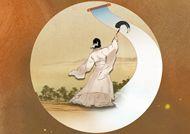
 0 Comment(s)
0 Comment(s) Print
Print E-mail China.org.cn, December 20, 2023
E-mail China.org.cn, December 20, 2023Editor's note: Xuan paper, a high-quality rice paper known as the "King of Papers," originated in ancient China more than 1,000 years ago. It is famed for its smooth surface, pure texture and tensile strength, and is widely used in Chinese calligraphy and painting.

This time-honored paper can resist moths, mold, creases and corrosion, making it the material of choice for those producing scrolls and printing books. Most ancient Chinese books and paintings that have survived to the present day were made using Xuan paper.
Most importantly, Xuan paper excels in its ability to absorb water and resist ink, hence becoming an ideal material for traditional Chinese calligraphy and painting. Writers and painters can separate light strokes from heavy ones on Xuan paper to create the desired effects.
Different types of Xuan paper vary in their abilities to absorb ink. The paper can be roughly classified into three main types according to production methods: Shengxuan (literally "raw Xuan paper"), Shuxuan ("ripe Xuan paper") and Banshuxuan ("half-ripe Xuan paper").
Shengxuan paper absorbs water more easily, making it suitable for the artistic style of Xieyi, or freehand brushwork in traditional Chinese painting. Shuxuan paper, in comparison, has a reduced ability to absorb water because of its stiffer texture that comes from the addition of alum and other minerals. As such, it is often used for Gongbi paintings which showcase finer details. Banshuxuan has an intermediate level of absorbability and can meet artists' needs for both freehand styles and fine brushwork.
The most famous Xuan paper is produced in Jing county of Xuancheng city in east China's Anhui province, where locals use the bark of blue sandalwood tree and rice straw as the main materials. Traditional handicrafts are adopted throughout the whole process of paper-making. This process includes more than 100 steps such as steeping, washing, fermenting, bleaching, pulping, sunning and cutting, which take more than two years in total and have strict requirements. Some local paper workshops have also inherited or invented steps that remain secret.
These handicrafts, passed down by generations of Chinese people since the Tang dynasty (618-907), were added to the Representative List of the Intangible Cultural Heritage of Humanity in 2009. The Chinese characters 宣 ("xuan"), referring to the city of Xuancheng where Xuan paper was invented and developed, and 紙 ("zhi"), meaning paper, combine to represent the keywords for Xuan paper.
Jing county is a mountainous area and was once the only place where Xuan paper was produced. The small county has an adequate supply of clean water from its nearby rivers, as well as a mild climate, both of which are required for the production of high-quality paper.
Xuan paper was first mentioned in the ancient Chinese book "Notes of Past Famous Paintings" by Zhang Yanyuan (815-907) of the Tang dynasty, and has thrived since the Song dynasty (960-1279). In the late 18th century, Xuan paper made its way to Europe and America, and won the Golden Award at the Panama International Exposition in 1915.
In 2005, the Jing County Xuan Paper Association was established, the first of its kind, to promote the paper industry, which had become the pillar of the local economy. By 2015, Jing county was home to more than 400 companies involved in the Xuan paper industry. That same year, the China Xuan Paper Museum opened in the county, displaying typical local materials, traditional processing techniques and methods of creating artworks on Xuan paper.
Today, Xuan paper made in Jing county is still considered one of the finest papers available. Local people have created several famous brands and their paper sells well both in China and internationally, even becoming a sought-after material by calligraphers and painters worldwide.
Discover more about China's intangible cultural heritage and their keywords:
Items/years inscribed on UNESCO ICH list:
? 2022: Traditional tea processing
? 2020: Wangchuan ceremony, taijiquan
? 2018: Lum medicinal bathing of Sowa Rigpa
? 2016: Twenty-four solar terms
? 2013: Abacus-based Zhusuan
? 2012: Training plan for Fujian puppetry performers
? 2011: Shadow puppetry, Yimakan storytelling
? 2010: Peking opera, acupuncture and moxibustion, wooden movable-type printing, watertight-bulkhead technology of Chinese junks, Meshrep
? 2009: Yueju opera, Xi'an wind and percussion ensemble, traditional handicrafts of making Xuan paper
